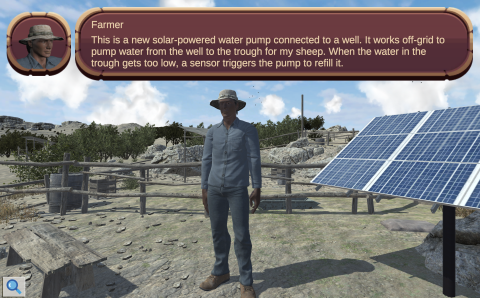Body
Image

Hybrid Immersive Learning Environments for the Diné
The mission of this ITEST Developing and Testing Innovations project is to explore the affordances of hybrid immersive learning environments situated in tribal contexts to engage Diné (Navajo) middle school students in place-based virtual scientific investigations and hands-on physical experiments and engineering design. This culturally responsive approach has the potential to inspire the next generation of Diné engineers and scientists to use their cultural and STEM knowledge to strengthen their communities and promote tribal sovereignty. Building upon prior NSF-funded work of PI Jordan and Co-PI Metcalf in partnership with the Ke’yah Advanced Rural Manufacturing Alliance (KARMA), the Department of Diné Education, and 7 Navajo Nation pilot schools, this project will result in the creation of two hybrid culturally-situated immersive learning environments for schools on the Navajo Nation centered around the past, present, and future of (1) energy (specifically the transition from coal to solar), and (2) water (both shortage and quality issues) in the Navajo Nation. This study will advance knowledge of blending virtual 3-D immersive learning environments with hands-on project-based learning, in culturally-situated contexts to support students to design energy and water futures. It will also generate new knowledge of how Diné cultural capital can be used in engineering design and intersect with STEM, & continue to evolve equitable community participatory research approaches.
Pillar 1: Innovative Use of Technologies in Learning and Teaching
The immersive virtual environment will support science investigation in the past and present through situated, place-based investigation, with connections to cultural and historical context, and visualizations not accessible in real world environments. The hands-on engineering design activity will involve culturally sustaining Diné engineering design activities to engage students in designing solutions in the present and for the future of energy and water on the Navajo Nation.
Pillar 2: Partnerships for Career and Workforce Preparation.
This study will directly impact 1800+ middle school students and 60+ teachers across 15+ schools across all 5 agencies of the Navajo Nation by providing opportunities to learn about the history and contemporary issues surrounding energy and water conservation affecting the future of their communities. A train-the-trainer (TTT) model for PD will be used to promote tribal sovereignty by building internal capacity to scale and sustain implementation of the curricula.
Pillar 3: Strategies for Equity in STEM Education
A Community Participatory Design-Based Research (CP-DBR) approach will be used to collaborate with Diné community members (including elders, leaders, teachers, and engineers) to co-design and improve the virtual environment, integrate Diné traditional ecological knowledge (TEK), hands-on engineering design curriculum, and teacher professional development. CP-DBR is a responsible and ethical data-driven process to collaborate with the Diné community on research that benefits both Diné and research communities.

Discipline(s)
Engineering
Environmental sciences
Interdisciplinary
Target Gradespan(s)
Middle school (6-8)
Target Participant(s)
American Indian/Alaska Native participants
Project Setting(s)
Formal Education
Category
Developing and Testing Innovations (DTI)
Research Study
Youth-Based